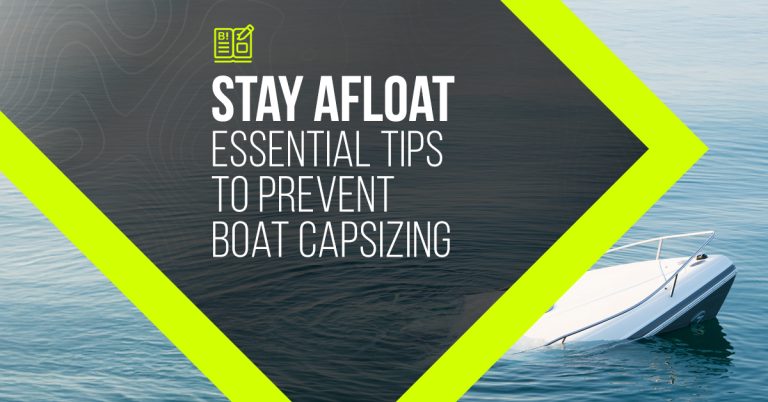 Preventing boat capsizing
Preventing boat capsizing
Prevent Boat Capsizing And Be Equipped Should It Happen
Posted on June 16, 2025
Capsizing is a frightening experience that can happen to even the most experienced boaters. When your boat tips over, knowing how to react promptly and effectively is essential for your safety and that of your passengers. Preventing boat capsizing and having the right safety gear can make a significant difference in emergency situations. In this guide, we’ll explore essential tips to prevent capsizing and the importance of crucial safety equipment such as EPIRBs, lifejackets, strobe lights, and Personal Locator Beacons (PLBs).
Understanding Boat Stability
Boat stability is fundamental to a safe and enjoyable maritime experience. Here are key tips that will aid in preventing boat capsizing:
- Proper Weight Distribution: Distribute passengers and cargo evenly to maintain balance. Avoid overloading, as excess weight can compromise stability.
- Be Weather-Wise: Stay informed about weather conditions before setting sail. Avoid navigating in adverse weather, high winds, or rough seas that increase the risk of capsizing.
- Avoid Sharp Turns: Maneuver the boat with gradual turns, avoiding sharp movements that can destabilize the vessel.
- Stay Low: In choppy waters, advise passengers to stay low in the boat to lower the center of gravity and enhance stability.
- Reduce Speed in Rough Conditions: Slow down when encountering rough seas. Excessive speed can make the boat harder to control.
Safety Gear for Boating
Should the worst happen and your boat does capsize, it is imperative that you have the following safety gear in order to communicate your emergency and exact location to Search and Rescuers.
1. EPIRB (Emergency Position Indicating Radio Beacon):
EPIRBs are vital distress signaling devices that transmit a distress signal to rescue authorities. Key points include:
- Automatic Activation: Some EPIRBs activate automatically when submerged in water, providing an immediate distress signal in case of capsizing.
- Global Coverage: EPIRBs are designed to work globally, ensuring that distress signals reach search and rescue teams even in remote locations.
2. Lifejackets:
Lifejackets are fundamental to water safety and can prevent drowning. Highlights include:
- Buoyancy: Lifejackets provide buoyancy, keeping individuals afloat in the water.
- Wearable at All Times: Encourage everyone on board to wear lifejackets, especially during rough conditions or emergencies.
3. Strobe Lights:
Strobe lights enhance visibility in low-light conditions, facilitating rescue efforts. Key features include:
- Visibility: Strobe lights are highly visible, making it easier for rescuers to locate individuals in the water.
- Waterproof: Most strobe lights are waterproof, ensuring functionality even if submerged.
4. Personal Locator Beacons (PLBs):
PLBs are compact distress beacons carried by individuals. Key benefits include:
- Portability: PLBs are small and easy to carry, making them ideal for personal use.
- Manual Activation: Users can manually activate PLBs to send distress signals with their precise location to rescue authorities. More advanced PLBs with Automatic Identification System (AIS) and Semi-Automatic activation are available in the ResQLink AIS.
Preventing boat capsizing by prioritizing boat stability, and having the right safety gear, is not just a precaution; it’s a responsibility. Whether you’re a seasoned sailor or a novice, these measures can make all the difference in ensuring a safe and enjoyable maritime adventure. Invest in quality safety gear, stay informed, and sail with confidence, knowing you’re well-prepared for any unforeseen challenges on the water.